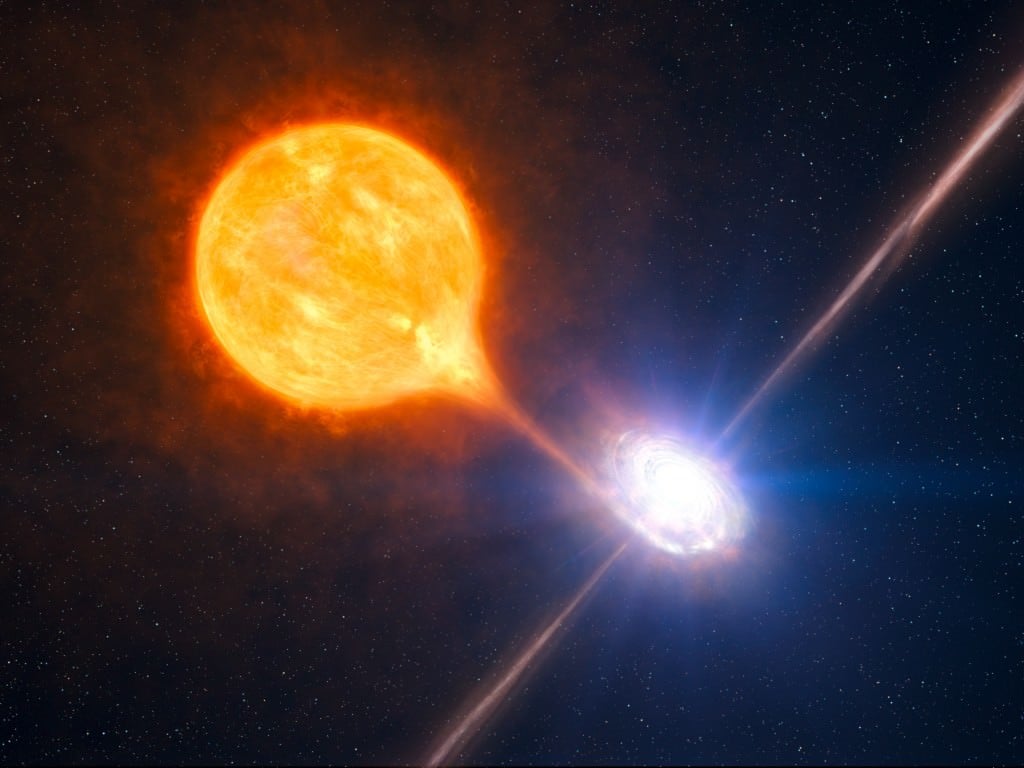Want to take a look at some black hole binary systems? Well then NASA's got your back with this stunning visual showing 22 confirmed systems.
Dancing in the dark
Each system in NASA's visualization consists of a star orbiting a black hole. You can see that most stars feed their material into the black hole's event horizon. Sometimes that feeding is barely visible, with only a thin disk of material surrounding the black hole. Other times it's more prominent, with the star itself stretching out. In others, the star produces an outflow called a stellar wind, which the black hole vacuums up.
The video, produced by NASA's Goddard Space Flight Center and Scientific Visualization Studio, keeps all the black hole systems to scale. The largest black hole binary, GRS 1915, dominates the center. In that system, the accretion disk is larger than the orbit of Mercury in our own solar system.
To guide yourself around the video, here are some pointers:
- All of the 22 confirmed systems in the visual live in the Milky Way galaxy or our nearest neighbor, the Large Magellanic Cloud
- The visual speeds up the rotation rates of all the systems by 22,000 times.
- The star colors are accurate. For example, the hottest stars, which are blue-white, are five times hotter than the Sun. The coolest stars, which are red, are 45% cooler.
- The accretion disks are so bright that they outshine the stars, so their coloring is on a different scale.
- The different angles that we see the black hole binary systems represent how we see them from our perspective on Earth.
The visualization includes some famous black hole binary systems. For example, there's Cygnus X-1, the first known black hole, which sits 7,200 light-years away from us. In that system, the black hole has a mass of 21 solar masses, and the companion star is 40 times bigger than the sun. The visualization also includes MAXI J1659, the system with the fastest known orbit. In that system, which is 29,000 light-years away from us, the companion star orbits the black hole every 2.4 hours.
Black hole binary basics
Astronomers know of these systems through the copious amounts of X-ray radiation that they produce. When companion stars get too close to the black hole, the intense gravity of the black hole pulls on their atmospheres. All that gas and material flows onto the black hole, which is relatively small. For example, the Cygnus X-1 black hole is only 77 miles across. This forces the gas to compress, and all that friction makes it heat up. The accretion disks in black hole binary systems reach such high temperatures that they emit X-ray radiation.
By studying the orbiting system, astronomers can figure out the properties of the black hole. The X-ray emission gives a sense of the overall size, while the orbit of the companion reveals the mass. Putting these together gives the density, and if it's above a certain threshold then astronomers know that it's a black hole.
You can find more information about the visualization by visiting NASA's website.
 Universe Today
Universe Today

